In Issue #113 of Singletrack Magazine, we reviewed three modern geometry 29ers to see just how far the big wheels have come.
Unlike Evil and Orange, Pivot Cycles has been making 29in mountain bikes for quite a while now. The US-based brand originally launched back in 2007 with the Mach 4 and Mach 5, then barely a year later it rolled out a 29er in the form of the Mach 429 – a bike that is now almost ten years old.
While it took the UK market much longer to warm to 29ers, they were far more readily accepted on the other side of the pond, where boutique US brands such as Niner, Ellsworth and Pivot tapped into the allure of wagon wheels early on.
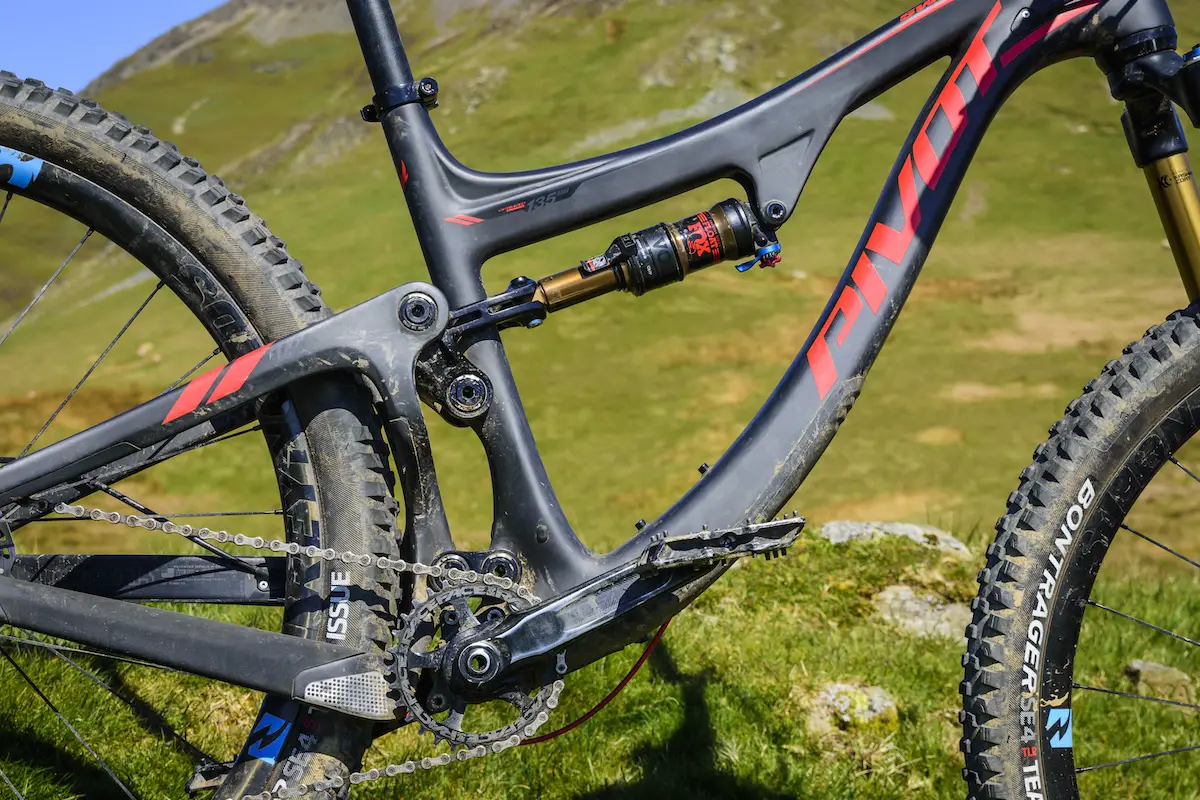
Since that first Mach 429, Pivot has added numerous 29ers to its range, including carbon versions of the Mach 429, and a burlier version called the Mach 429 Trail – a bike that is up there as one of the best short-travel bikes I’ve ever ridden. As such, I had lofty expectations for the new Switchblade.
Reviving an old model name from Pivot-owner Chris Cocalis’ days at Titus, the Switchblade comes into the range as a long travel full suspension 29er. Building off the success of the 116mm travel Mach 429 Trail, the Switchblade uses a carbon fibre frame and a dw-link suspension design, but with a step up in travel to 135mm on the rear, and 150mm up front.
That begs the question then, why isn’t it called the Mach 529?
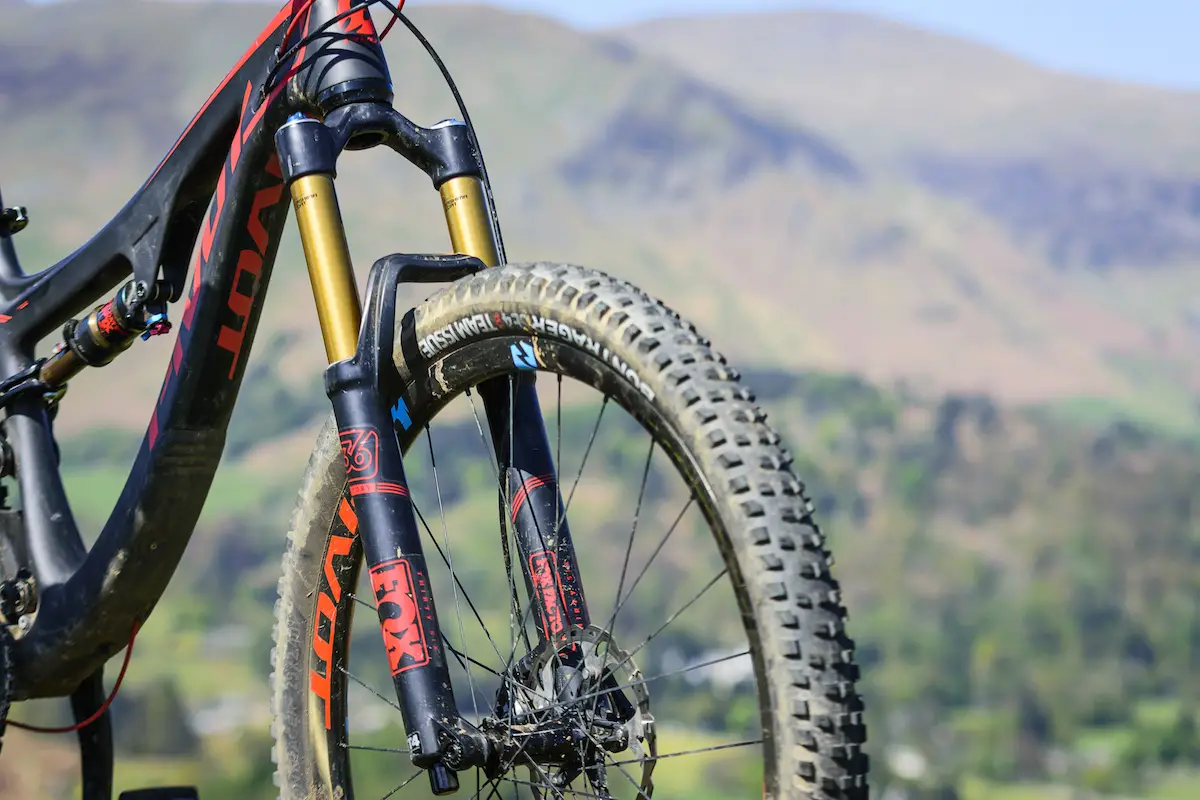
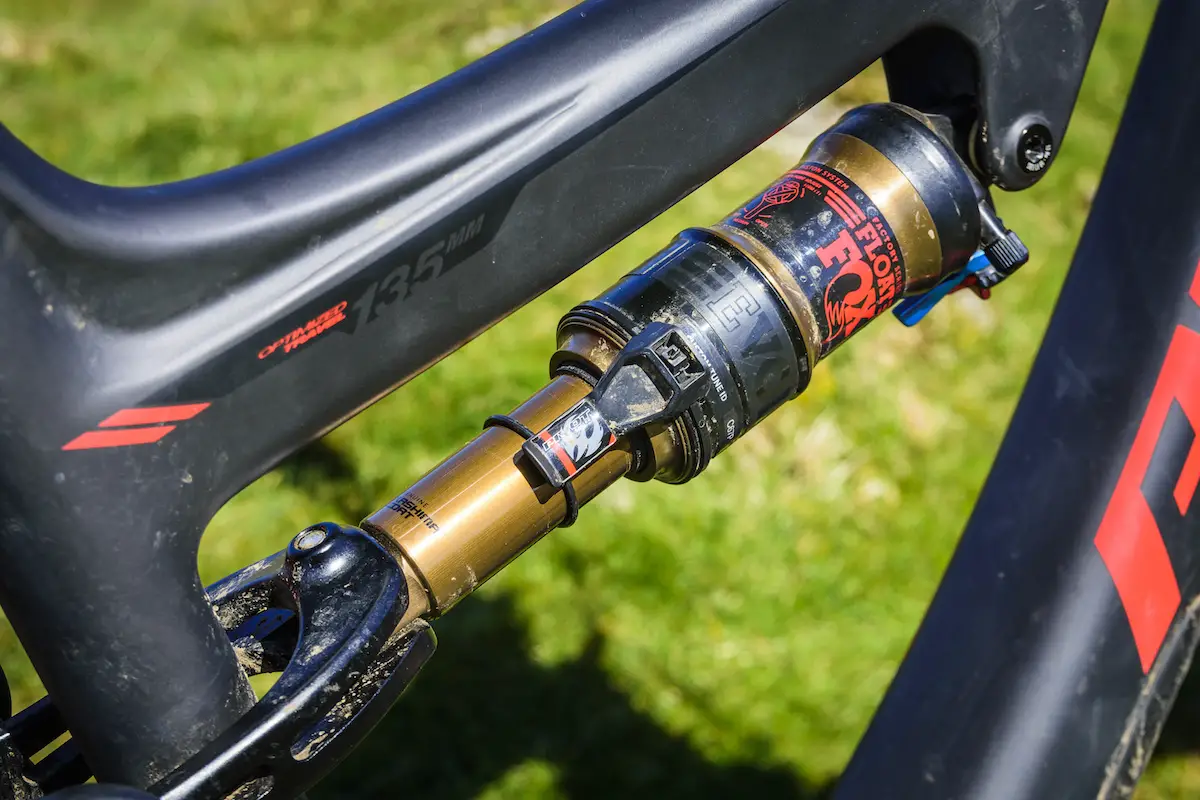
The answer lies in the Switchblade’s wheels, or rather, in its ability to switch wheels. Yes ma’am, the Switchblade’s ace up its sleeve is that it can also fit 27.5+ wheels – hence the name. It turns out that this wasn’t always the plan, as Pivot originally began to develop the Switchblade as a long travel 29er that was going to be called the Mach 529. As the whole plus thing was building steam during the developmental stage for the bike, the decision was made to open up the bike’s wheel size compatibility in order to create one of the most versatile mountain bikes Pivot has ever built.
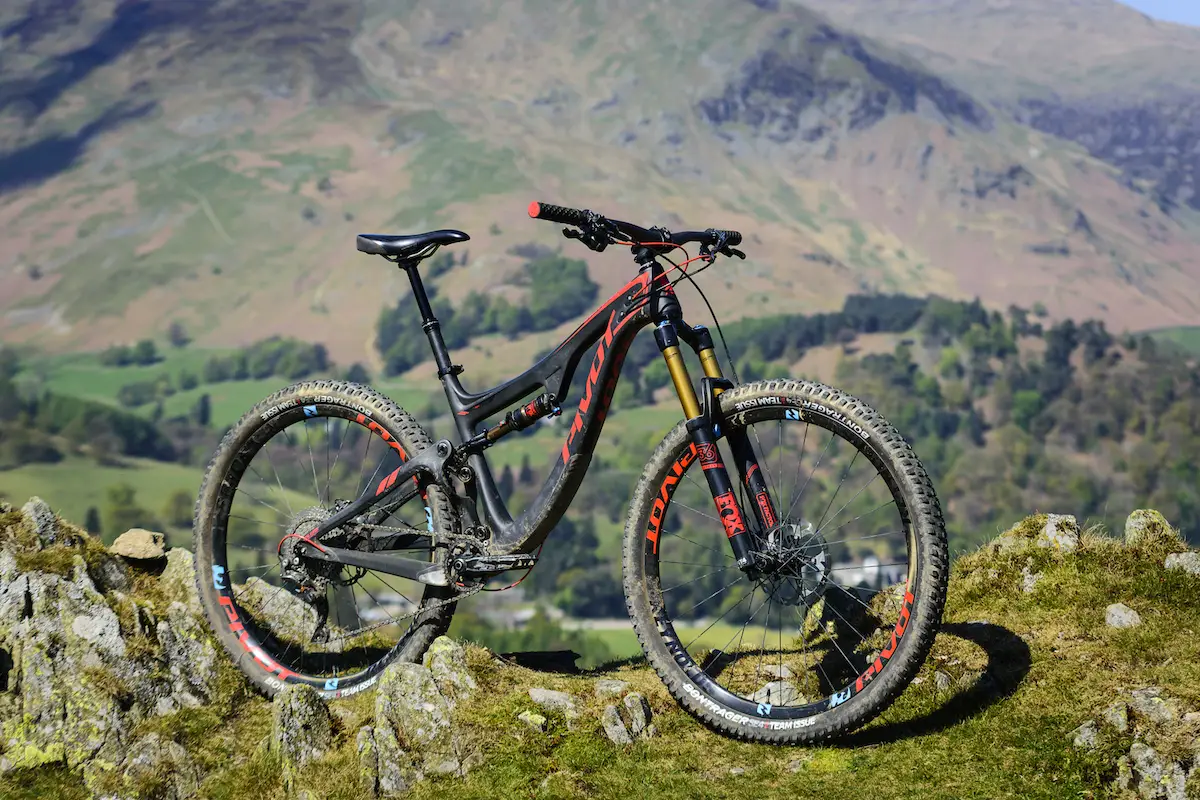
The Bike
Make no buts about it, the Pivot Switchblade is an incredible looking machine. Using a full carbon mainframe and swingarm, the Switchblade employs Pivot’s Hollowbox construction that sees the carbon fibre cloth wrapped over the top of a solid internal mandrel. With higher compaction rates during the curing process, this technique achieves smoother walls internally, and the ability to create more precise and complex tube profiles.
Indeed, the one-piece swingarm is an engineering feat in itself. While delivering clearance for 29×2.5in or 27.5×3.25in tyres, the Switchblade features class-leading 428mm chainstays.
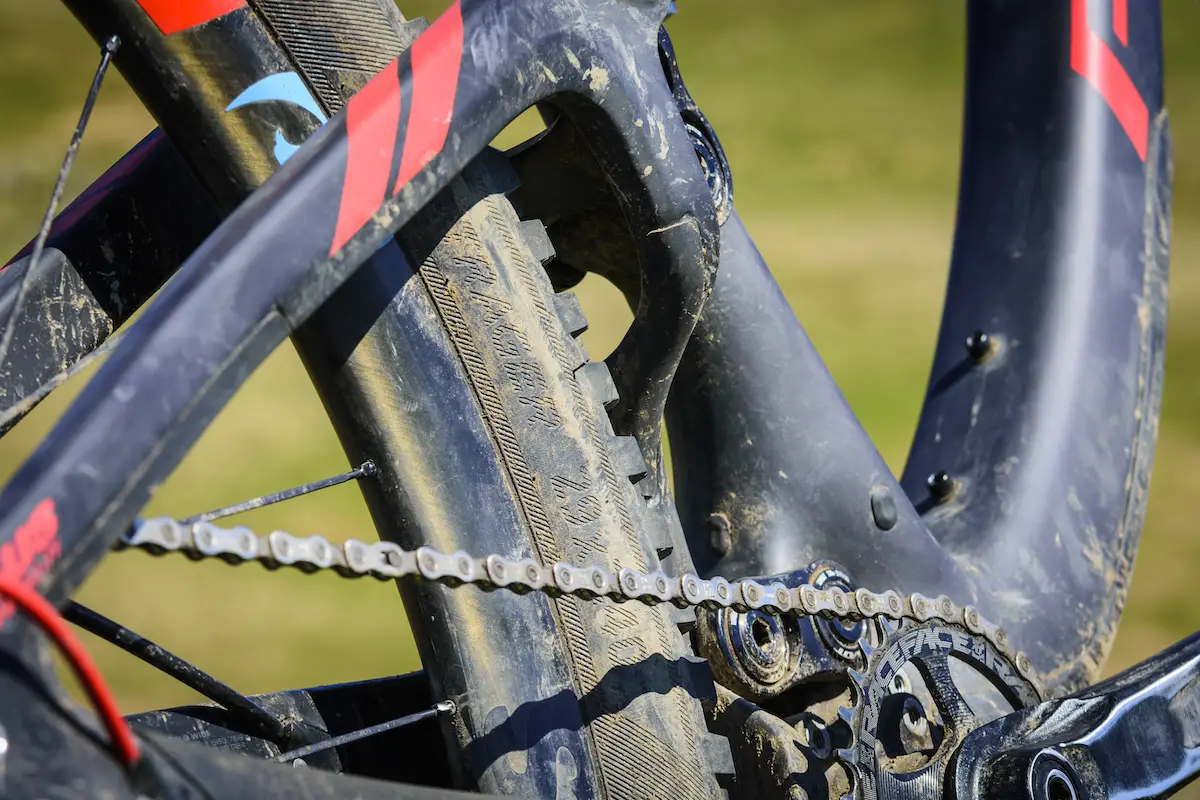
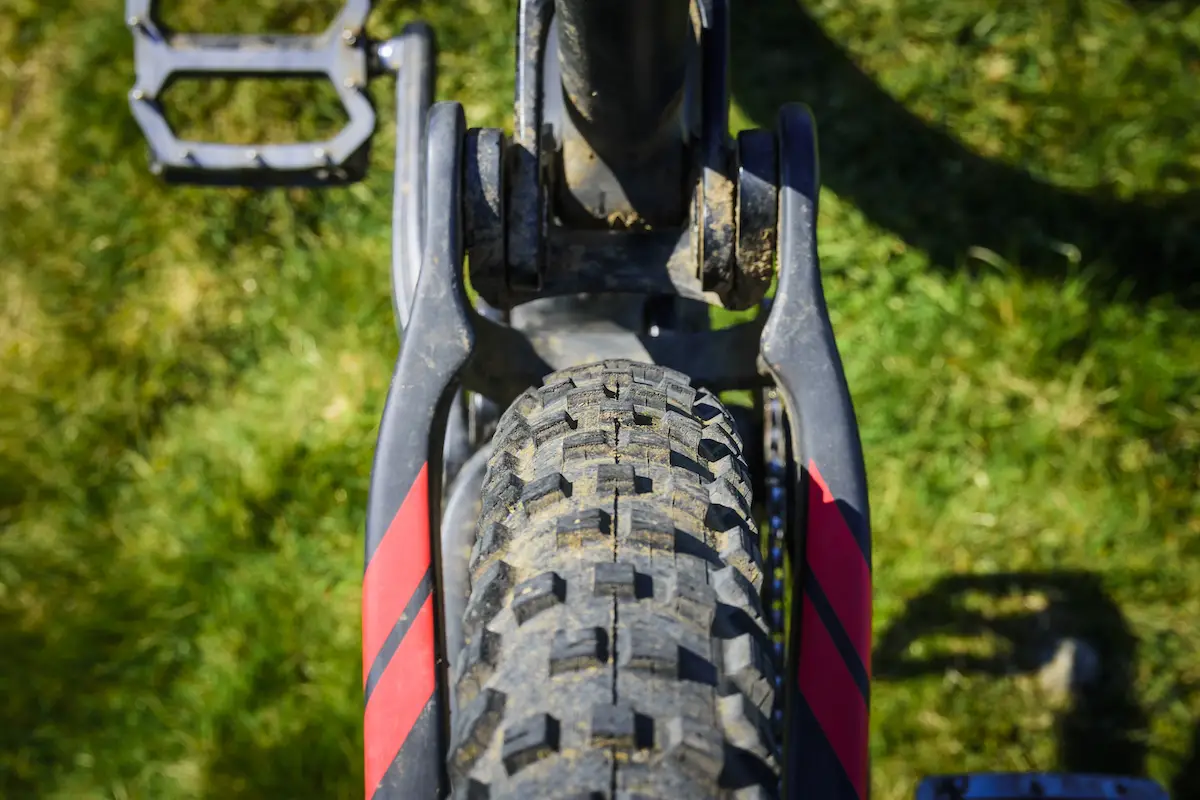
To achieve such a short rear end, Pivot has gone to a wider chainline and a 157x12mm rear hub. However, it’s not quite the standard 157mm hub you’ll find on a downhill bike, though those will still fit in the Switchblade. Instead, the rear hub is a custom ‘Super Boost Plus’ hub, which (like Boost) uses wider hub flange spacing in order to build a stiffer rear wheel, which Pivot saw as an essential element to building an enduro-ready 29er.
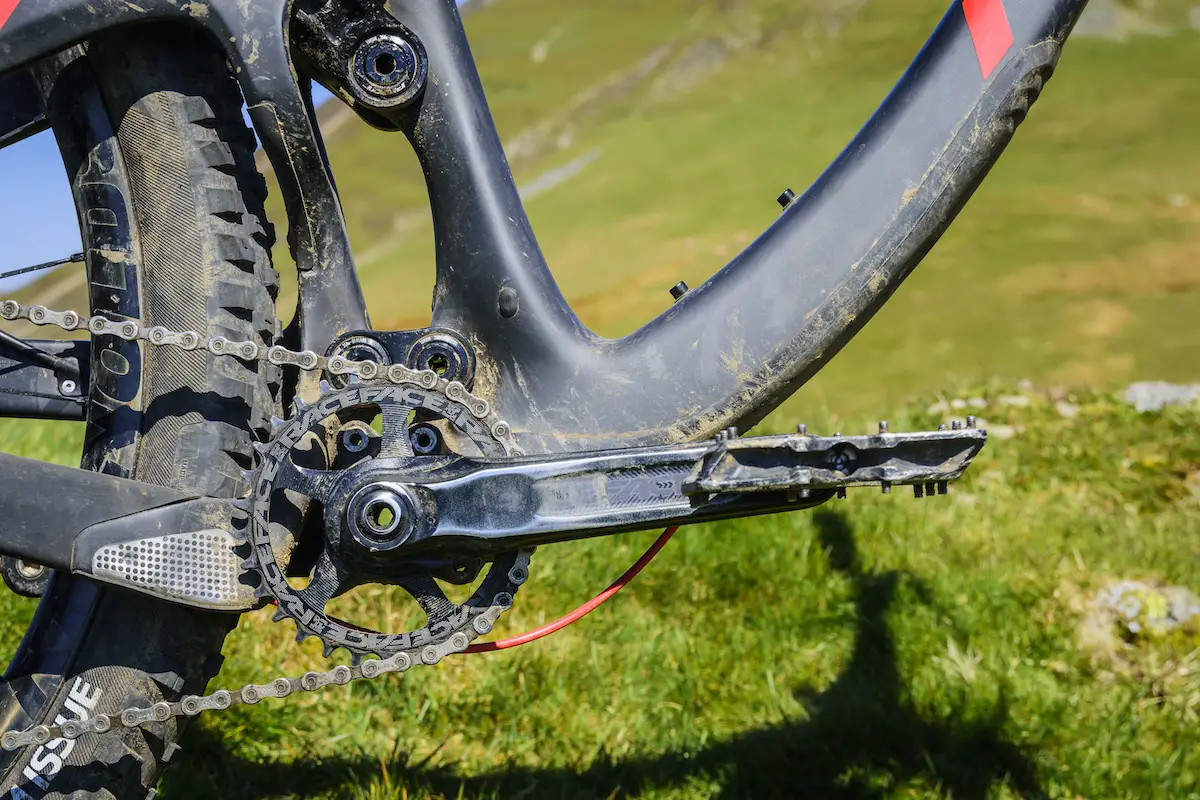
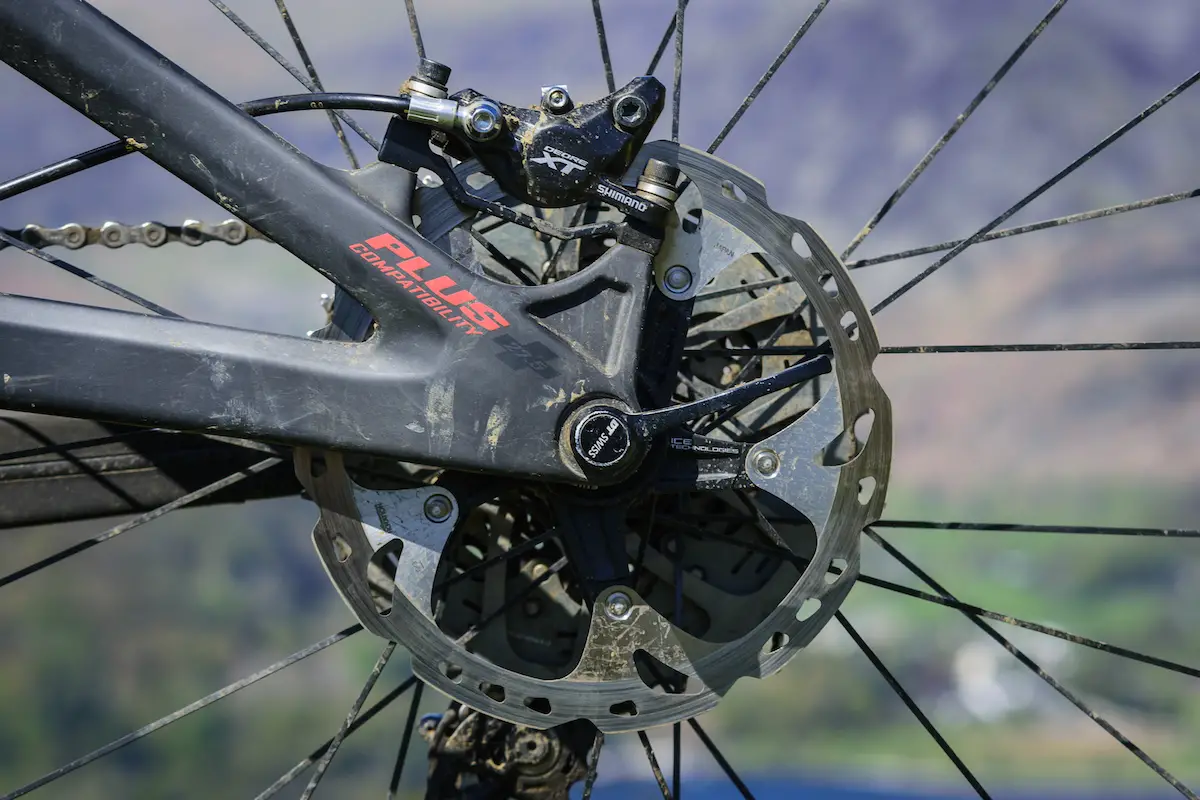
To match the chainline of the Super Boost Plus rear hub, a Race Face Aeffect crankset has been used on our test bike with a wider Q-factor. For skinny-hipped riders like me, the wider stance is noticeable when swapping between bikes. Coincidentally, my time with the Switchblade did coincide with some random knee pain issues, though other testers remained unaffected. Of note is that more expensive Switchblade models use standard Q-factor cranks with the chainring flipped outwards.
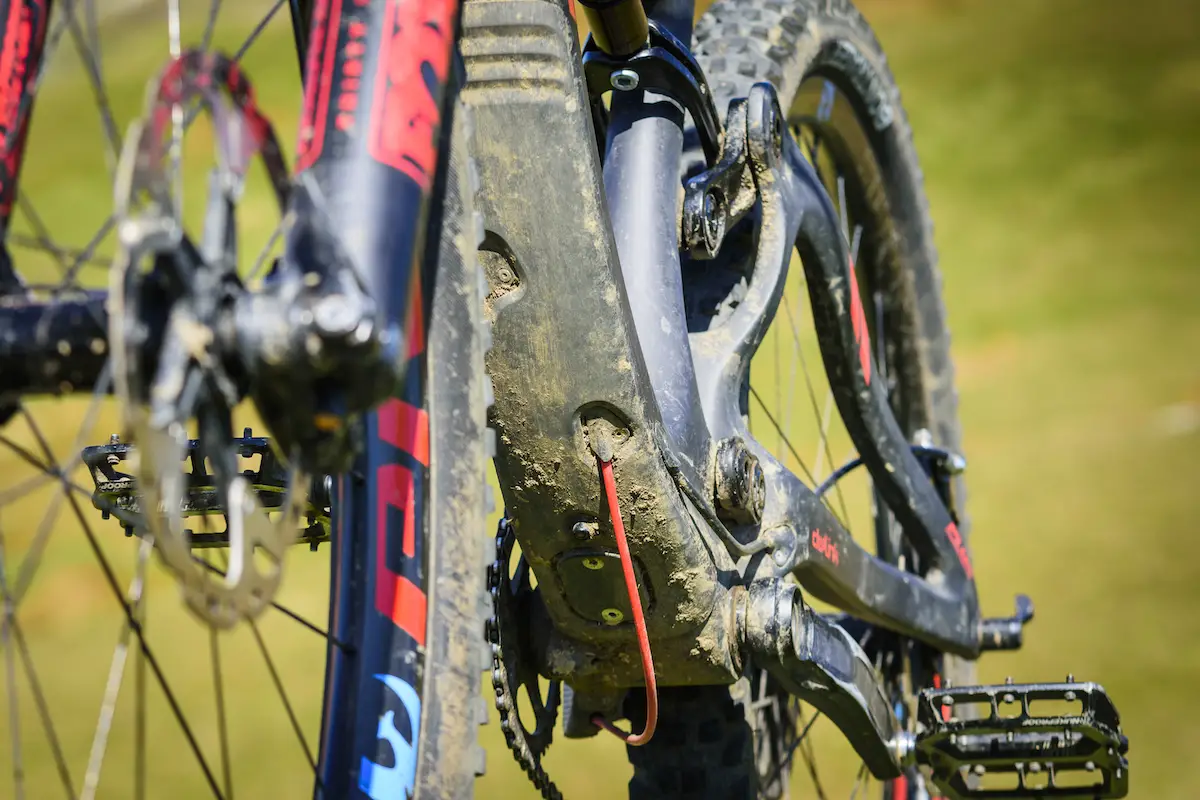
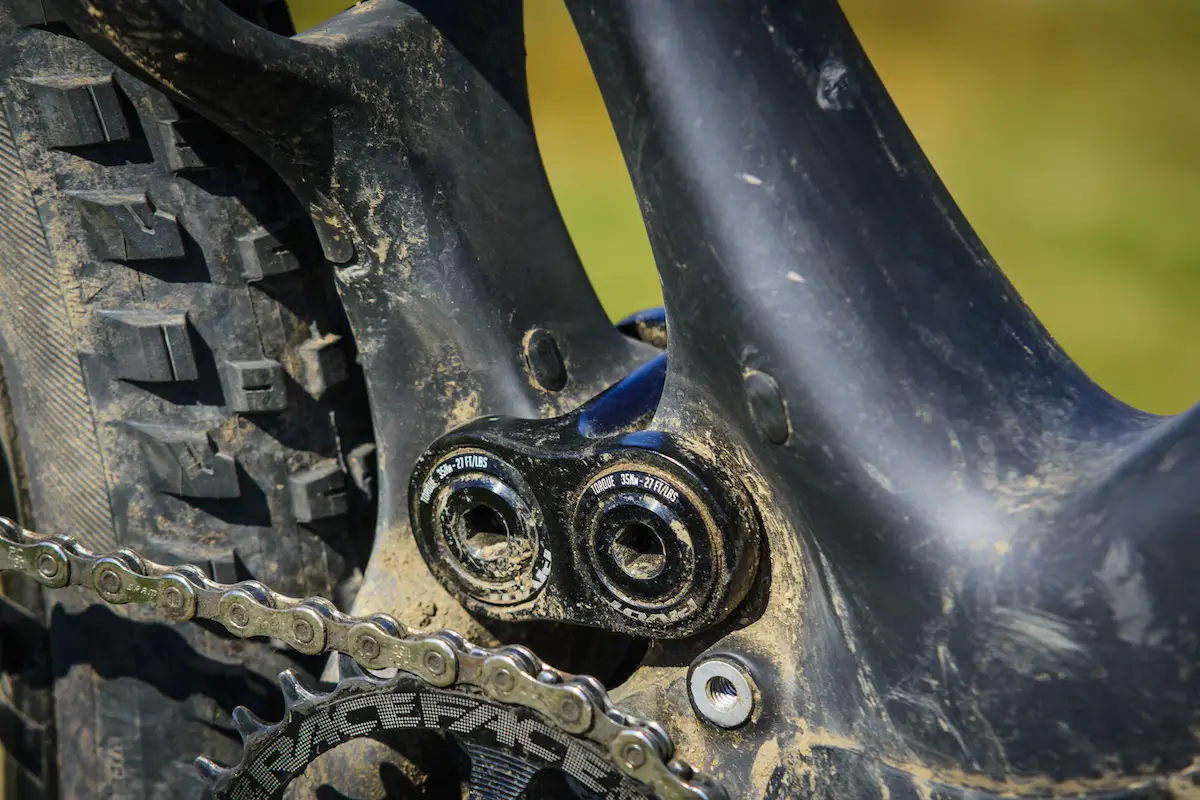
Pivot is particularly proud of the fact that even with such short chainstays and generous tyre clearance, the Switchblade is still 2x compatible. The compact swingarm with its Y-shaped strut is certainly impressive, but I found myself wondering how much easier it would have been to build this frame as 1x only.
Worth shouting about is that the Switchblade is available in five frame sizes down to an XS size, making it one of the biggest travel 29ers for riders as short as 4ft 11in. It also happens to feature loads of standover clearance, and room to fit a water bottle inside the mainframe on all but the XS size.
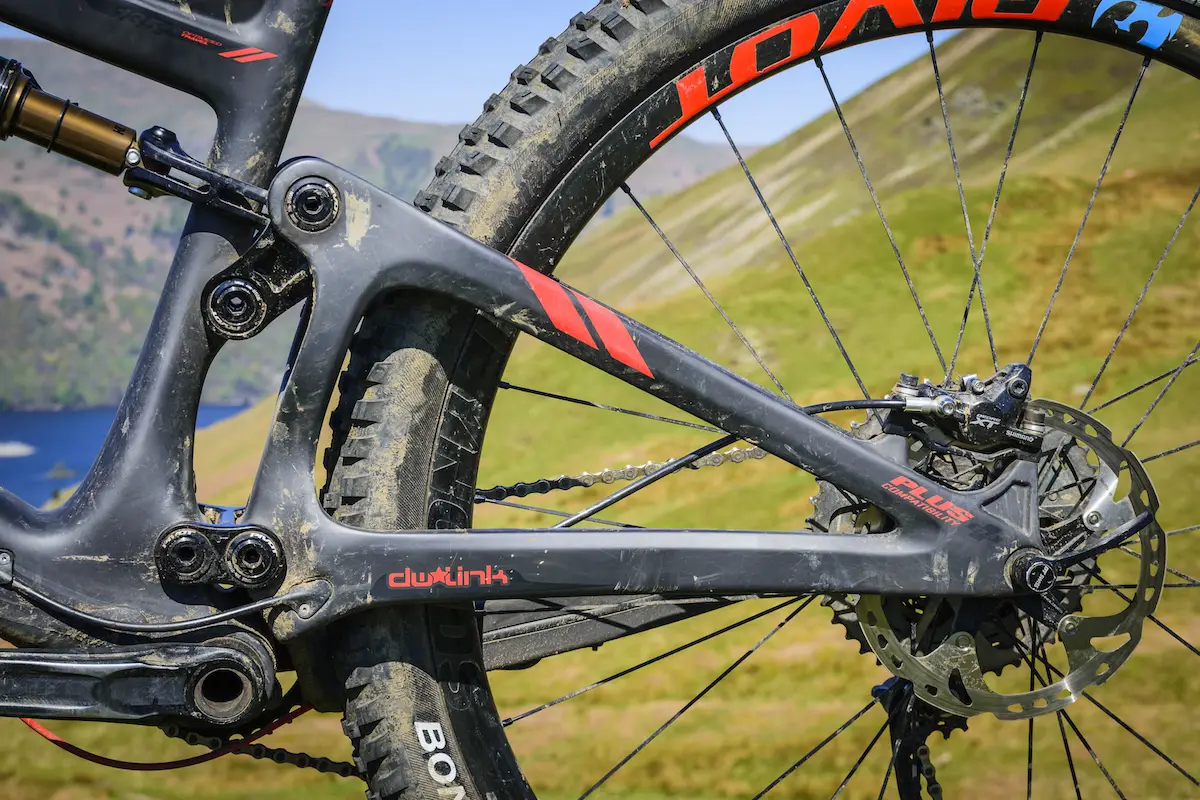
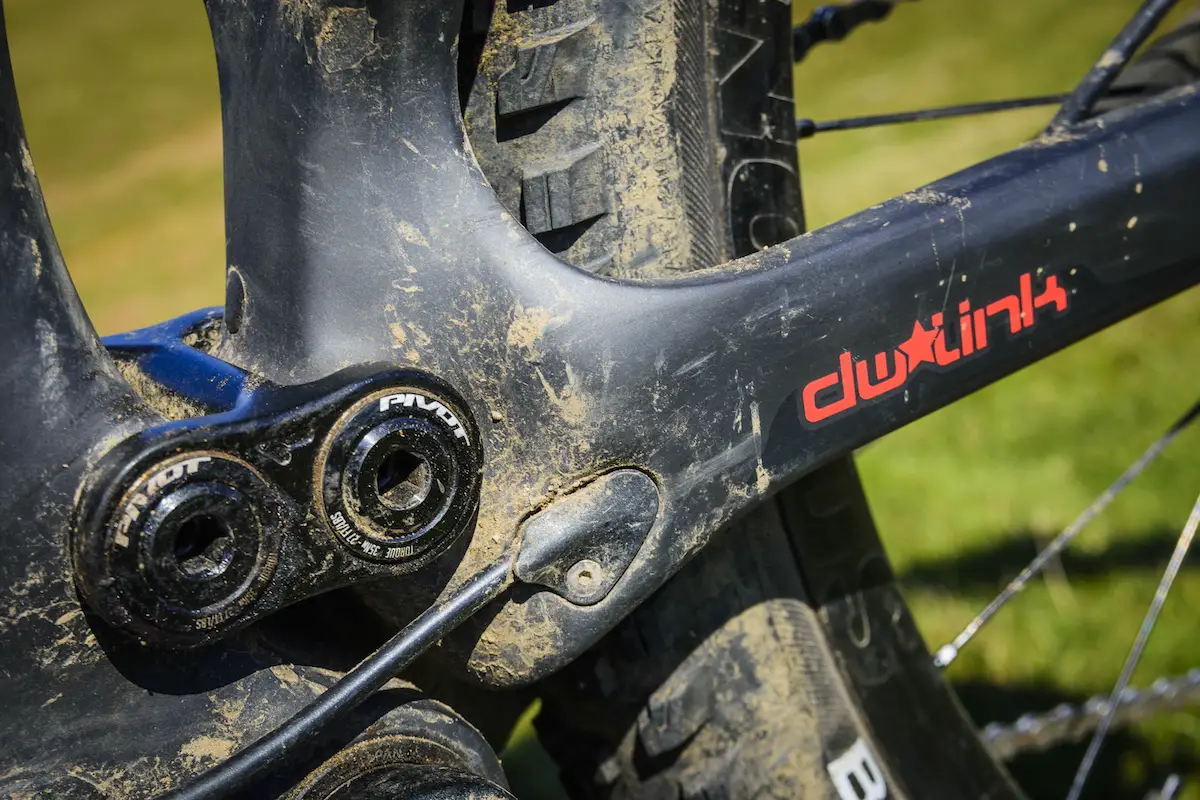
Joining the two carbon structures together is the DW5 suspension design. Using a pair of machined alloy links packed with Enduro MAX cartridge bearings, the upper linkage drives the shock via an additional yoke. Other frame details include Di2 compatibility, a PF92 bottom bracket, ISCG 05 tabs, integrated rubber armouring, and modular internal cable routing ports.
Our Medium test bike came set up in 29er mode, complete with an upgrade to a set of Reynolds Carbon wheels. Suspension is handled by blingy gold Fox Kashima items, with the chunky 36 up front set at 150mm travel. Of note is the 17mm lower headset spacer fitted on our test bike, which is normally only used on the 27.5+ set-up, but can also be used with 29in wheels to slacken out the head angle to 66.5°.
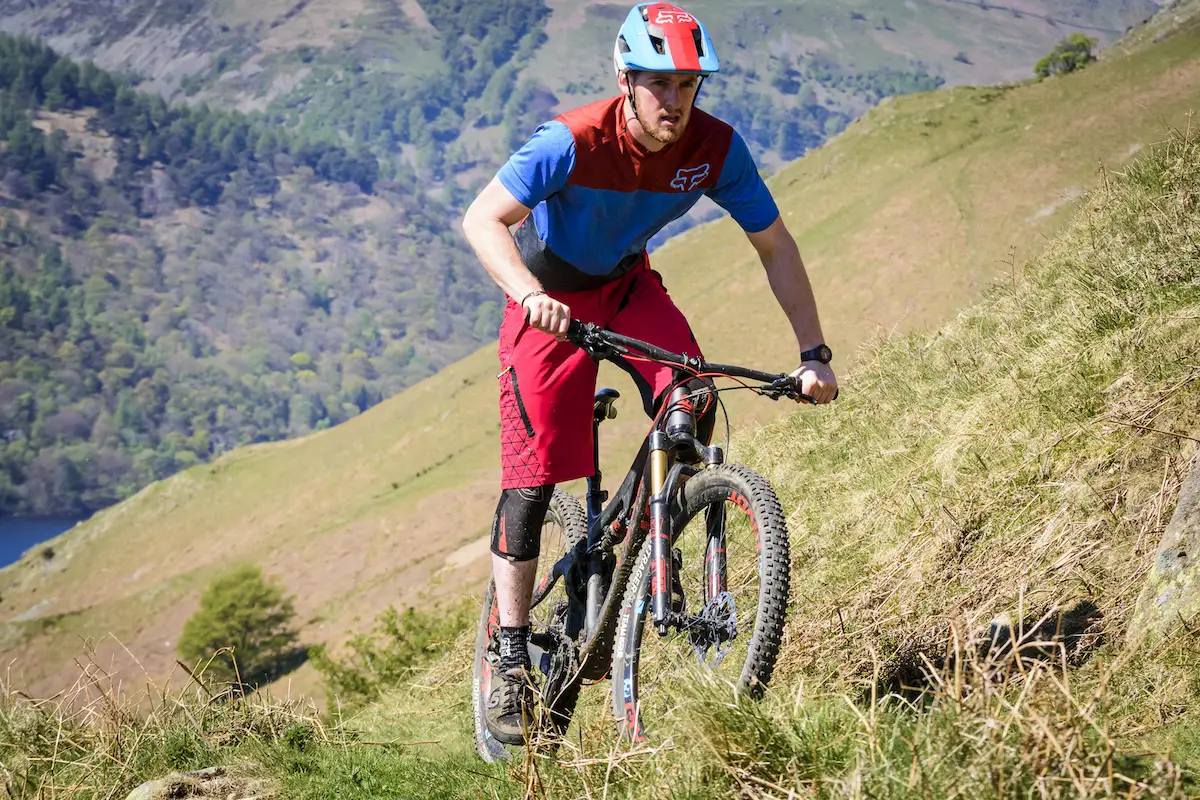
The Ride
The bike’s 440mm reach is the longest on test, and along with the wide bars, it provides the Switchblade with a spacious cockpit. I was sceptical of the WTB PadLoc grips, as the squishy ends feel can feel like they’re giving way when you’re tugging on the bars on the climbs, but I completely forgot about them on the descents – in a good way.
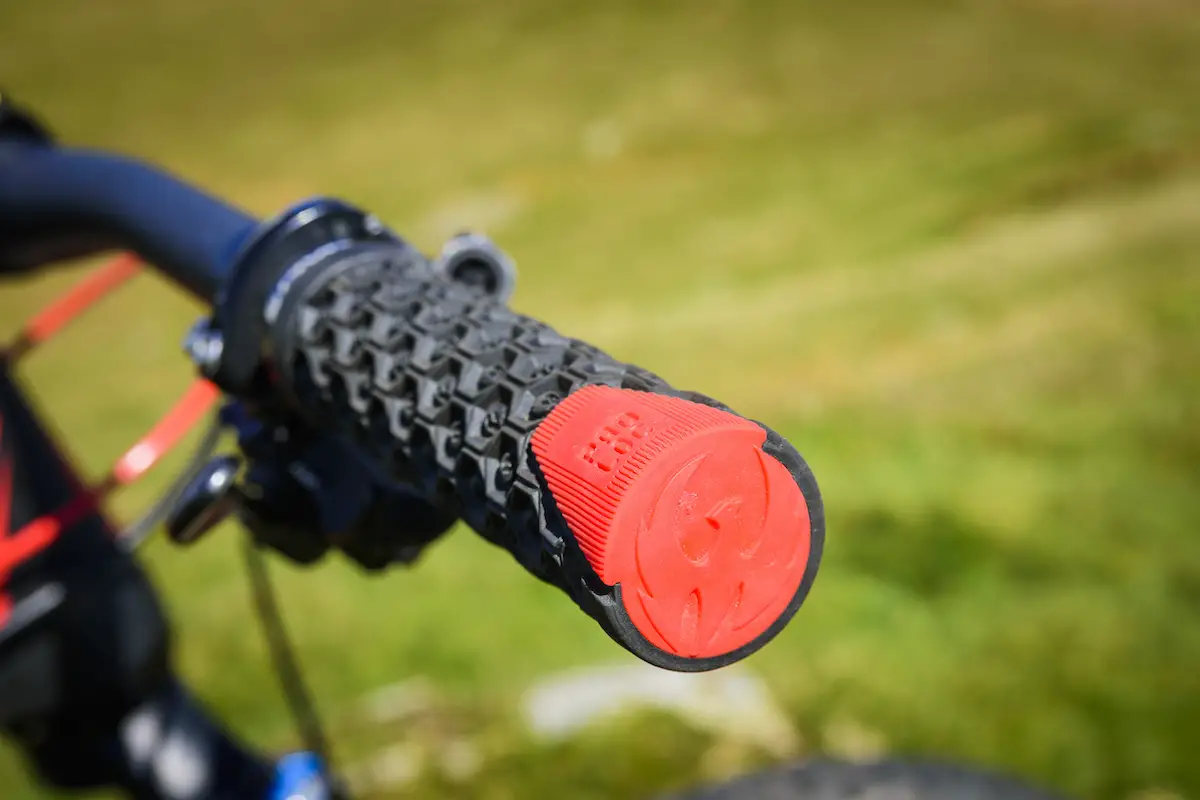
Just like other Pivot full suspension models, the Switchblade gets a neat sag guide that comes fitted to the rear shock. Follow this and you’ll end up with about 35% sag on the custom-tuned Fox Float DPS rear shock. The stock compression tune is very light, and that leads to a ridiculously supple feel to the back end. Seriously, this thing is Cadillac plush. With the sensation of sitting atop a soft white cloud, the Switchblade’s DW5 suspension design maintains wicked small-bump sensitivity, while isolating you well from the mid-to-large size impacts. You can tell this bike was designed on the rocky trails around Sedona and Moab – it devours square-edge hits with aplomb, and that translates well to the slabby rock around the UK’s North.

Traction is some of the best I’ve encountered, with the rear tyre remaining glued to the trail surface no matter how ugly things get. On our local packhorse trails in Calderdale, the pedal-neutrality of the DW5 platform means you can comfortably sit in the saddle and grind away on the Switchblade with the larger 29in wheels working in harmony with the suspension to keep you maintaining forward momentum. Stamp on the pedals a little harder, and the DW5 platform promptly firms up to give you a little extra zip. The bike also corners with sharp precision thanks to the compact rear end, though not quite as well as the Evil.
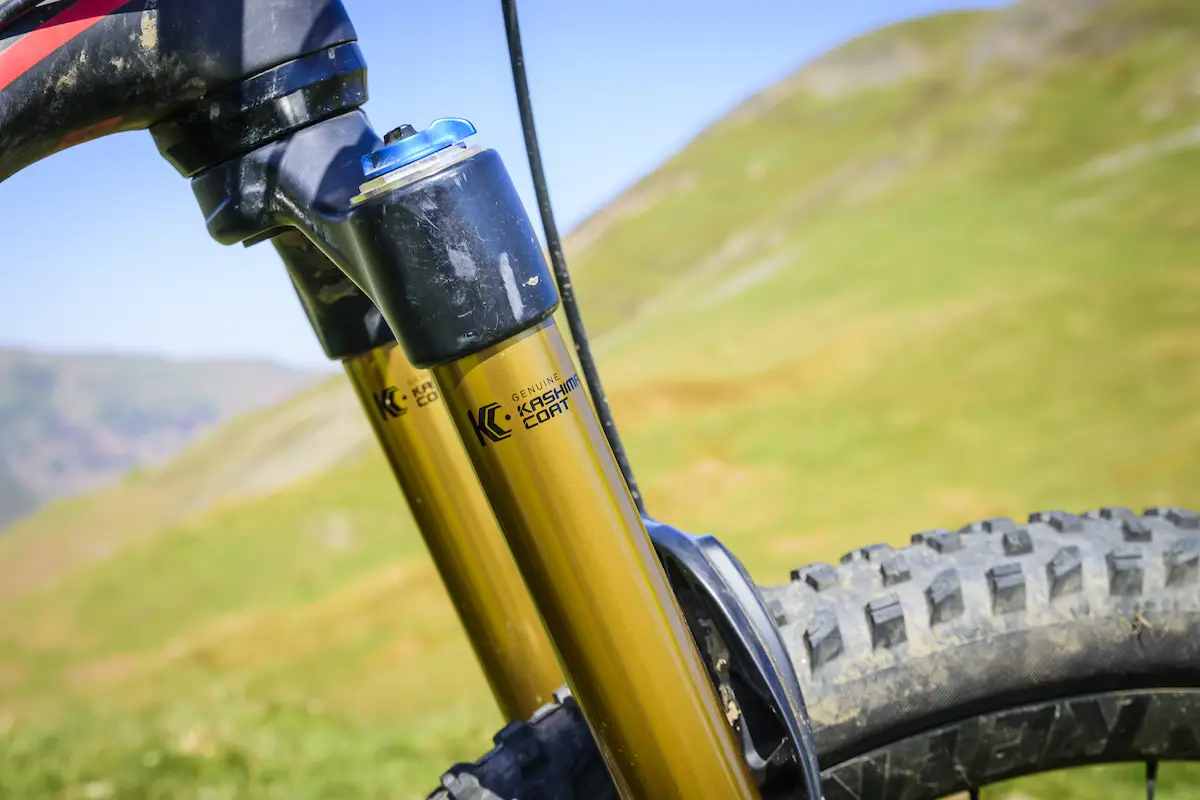
Because of the light compression tune, it’s best to run the rebound on the lighter side as well in order to avoid bogging down the rear shock. To balance the back-end, I removed a volume spacer from the Fox 36 fork and set the rebound dial halfway. Coupled with the short rear centre and stiff carbon frame, the active suspension on the Switchblade allowed for plenty of rock-swallowing activity, along with vivacious enthusiasm to lift the front wheel up and manual as many sections of trail as possible. And while I did experiment with shock volume spacers, there was honestly no need to. The shock progression is excellent, and you’re much better off adjusting the black compression dial on the shock to tune it for more platform if you want more damping support.
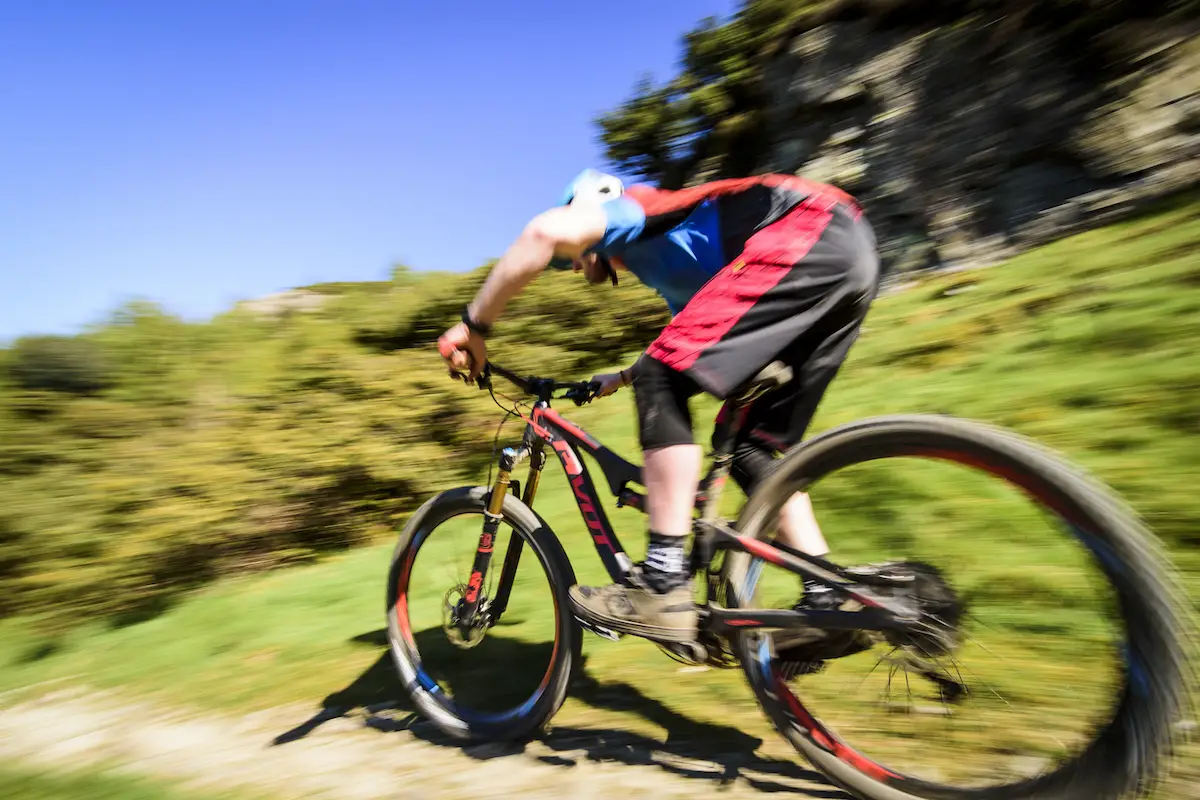
While all the 29ers in our group test proved to be quick, it was the Switchblade that had the most control when things got rough and fast. Its mini-DH bike feel allows you to throw it off all kinds of lips and drops on the trail, and I lost count of the times I launched it into disgusting rock gardens at speed. Every time, the Switchblade would remain calm and in control. I did find the Reynolds carbon rims to be rather uncompromising, which resulted in some exciting pinball action along rock-strewn singletrack. The stout frame certainly affords a point-and-shoot type handling approach, but if you’re not on your game, those stiff wheels can be a handful.
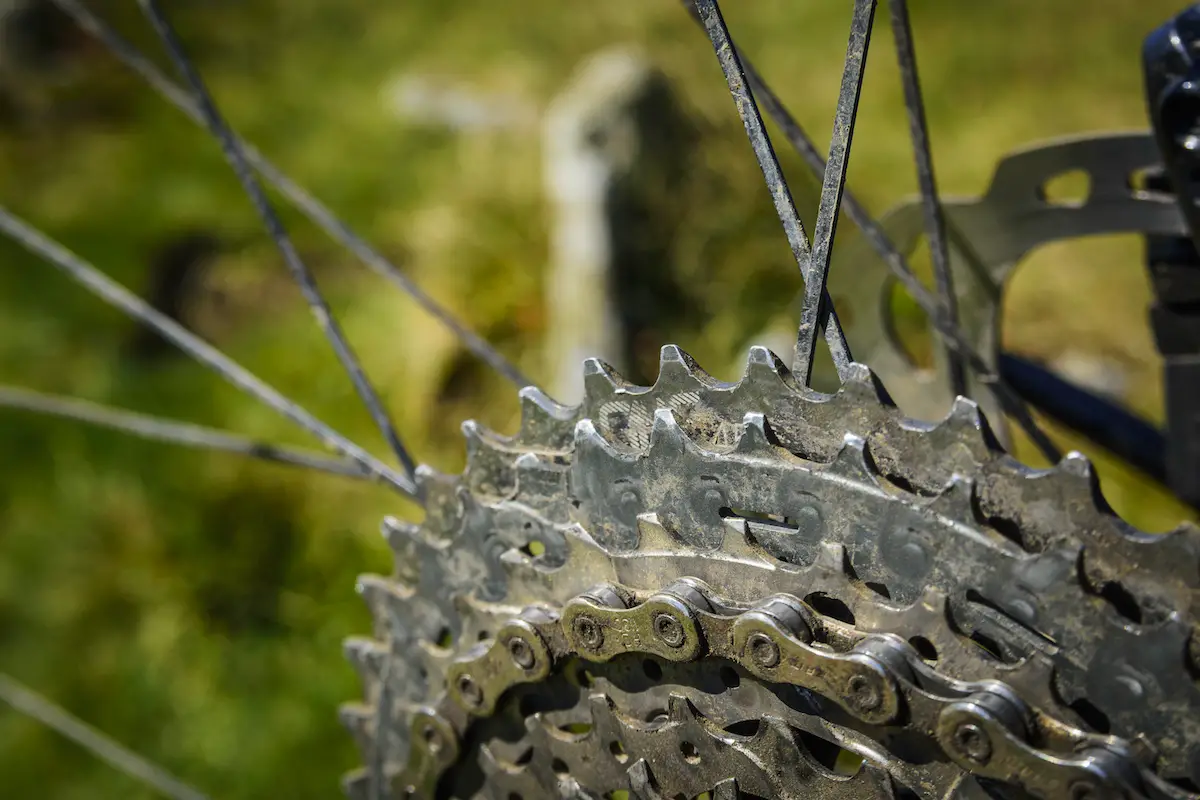
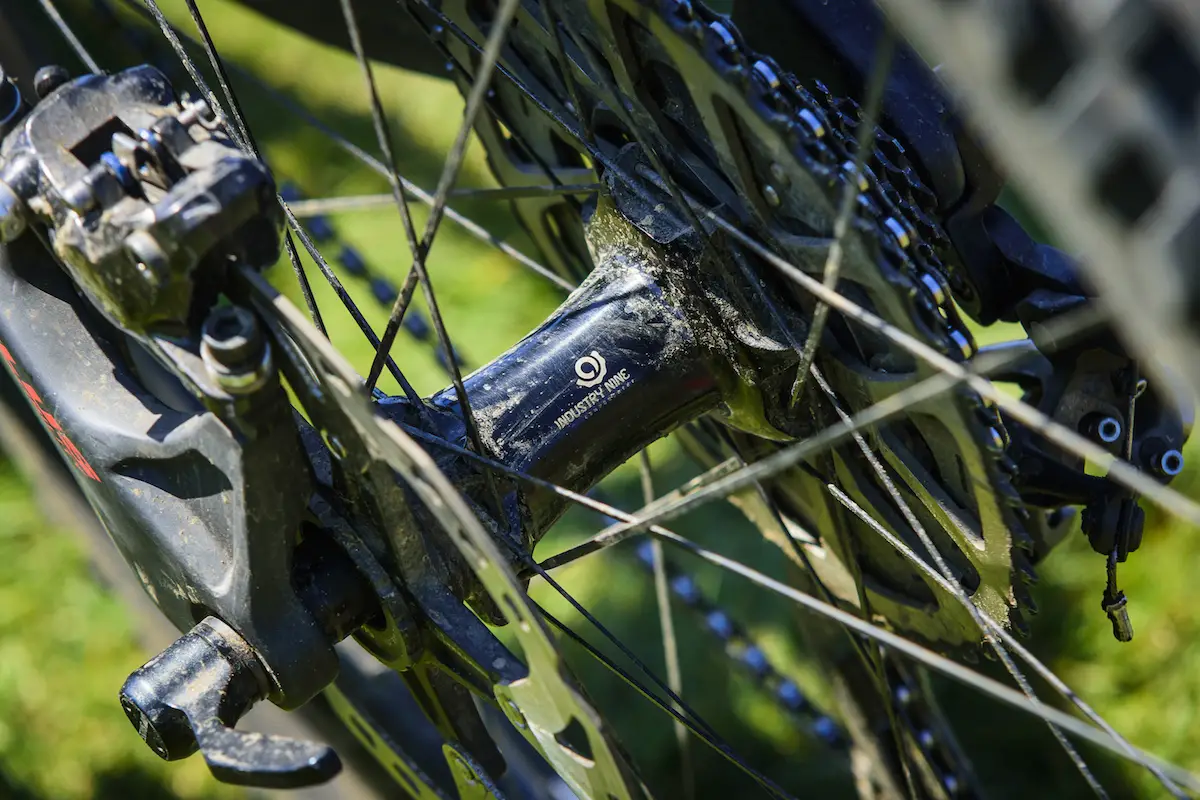
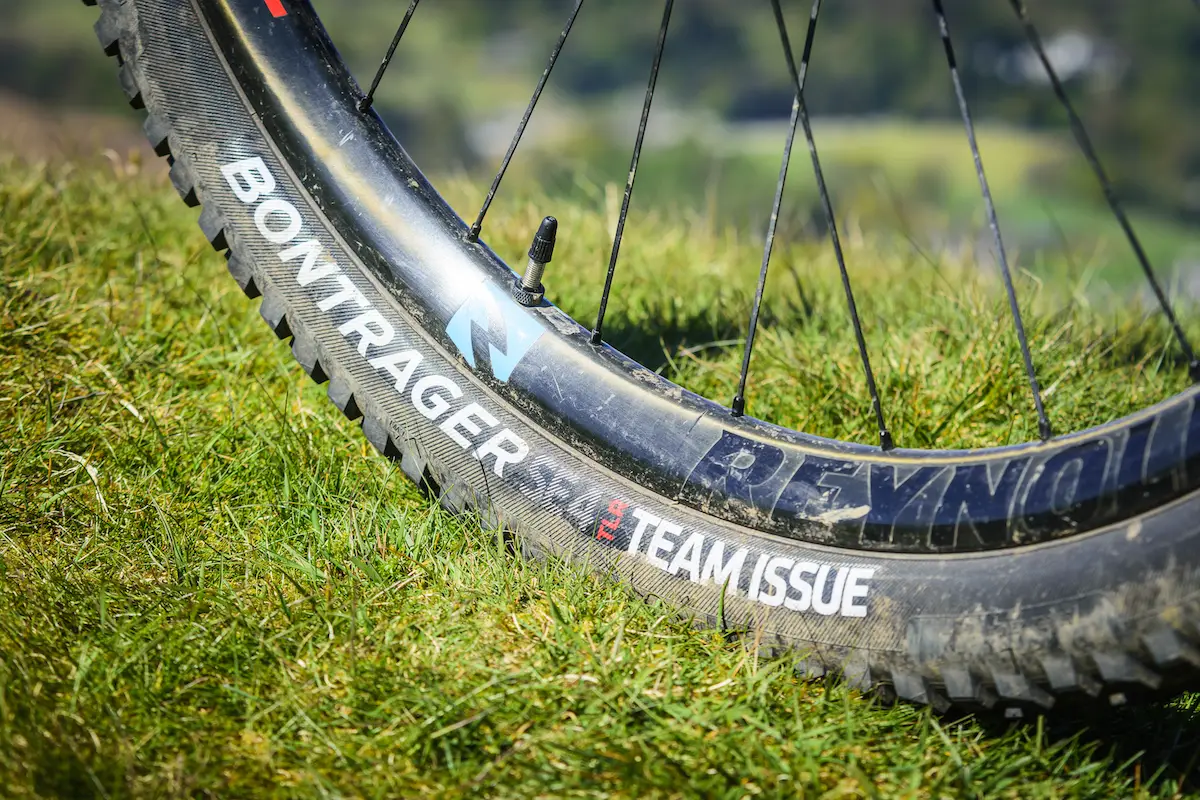
Another handful was the rear shifting, with the OneUp 45T cassette expander causing sluggish and vague shifting out back. The good news though is that complete Switchblades are now coming with Shimano’s 11–46T cassette instead. I also dropped the chain off the Race Face chainring several times, which is not uncommon after they’ve worn in. The KS dropper post worked without complaint after giving it a clean and lube-up partway through testing (and swapping to a Cane Creek remote to improve ergonomics), but the Switchblade ideally needs more than 125mm travel to get that big saddle out of the way.
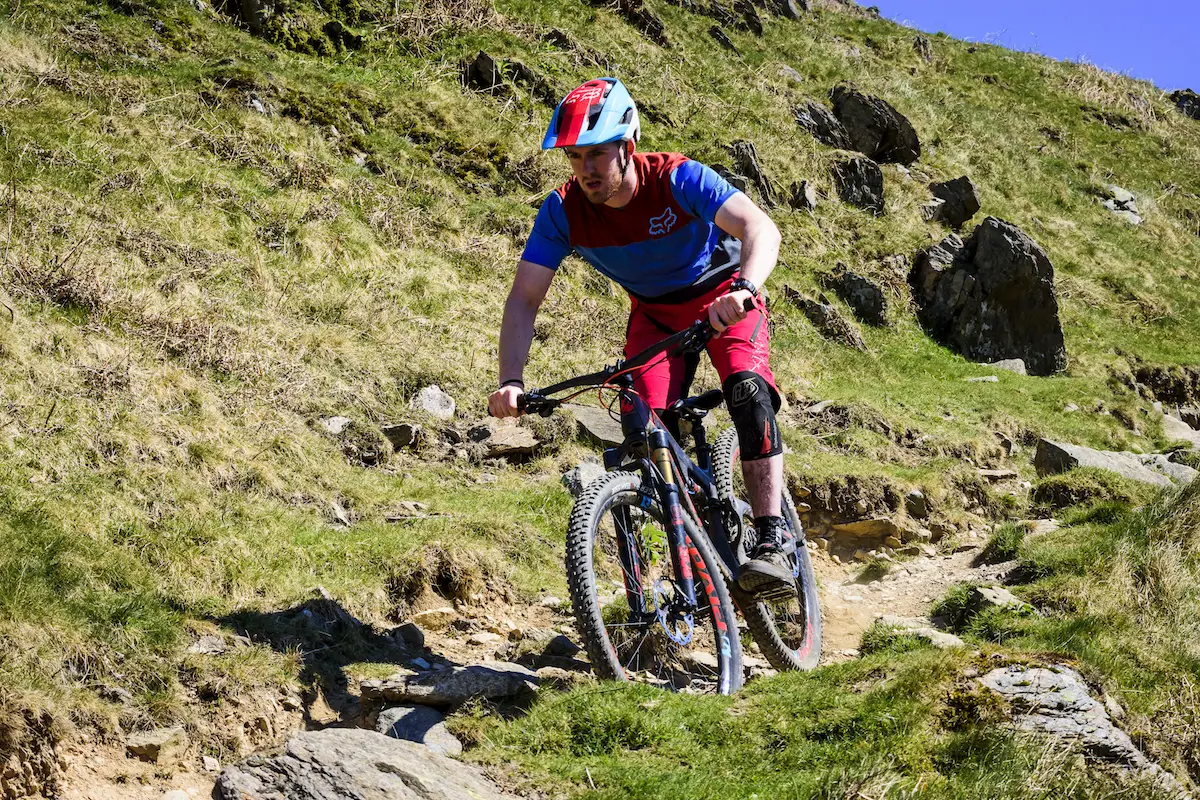
Overall
The Pivot Switchblade is no doubt an engineering marvel. How Pivot was able to design a 29er with such short chainstays and the ability to fit 27.5+ tyres AND the option to run 2x, I’m sure I will never fully understand.
Thanks to the plush suspension design and spacious cockpit, the Switchblade offers genuine all-day pedalling comfort in a bike that is fun, versatile, easy to handle, and supremely capable of tackling highly technical and rocky singletrack. It’s a highly refined and versatile ride.
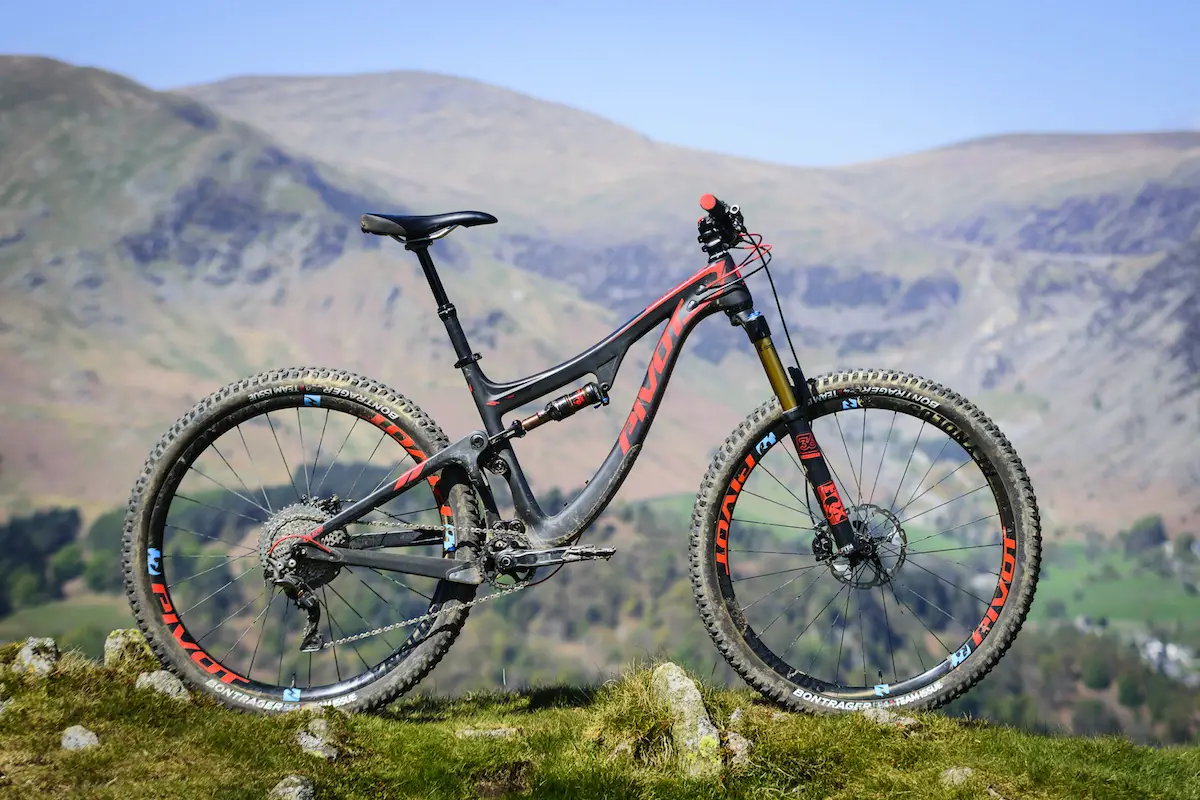
Pivot Cycles Switchblade 29 Pro XT Specifications
- Frame // Carbon Fibre, 135mm Travel
- Fork // Fox 36 Float FIT4, 150mm Travel
- Shock // Fox Float DPS EVOL
- Hubs // Reynolds/Industry Nine 110x15mm Front & 157x12mm Rear
- Rims // Reynolds Carbon Enduro 29
- Tyres // Bontrager SE4 Team Issue 2.3in Front & Rear
- Chainset // Race Face Aeffect SL, 30T Narrow Wide Chainring
- Front Mech // N/A
- Rear Mech // Shimano XTR Shadow Plus, 11-Speed
- Shifters // Shimano Deore XT, 11-Speed
- Cassette // Shimano Deore XT, 11-42T w/One Up 45T Cassette Expander, 11-Speed
- Brakes // Shimano Deore XT, 180mm Front & Rear
- Stem // Phoenix Trail Enduro, 50mm Long
- Bars // Phoenix Carbon Riser, 800mm Wide
- Grips // WTB/Pivot PadLoc, 33mm Diameter
- Seatpost // KS LEV Integra, 31.6mm, 125mm Travel
- Saddle // WTB Vigo Race
- Size Tested // Medium
- Sizes available // X-Small, Small, Medium, Large, X-Large
- Weight // 13.38kg (29.44lbs)





